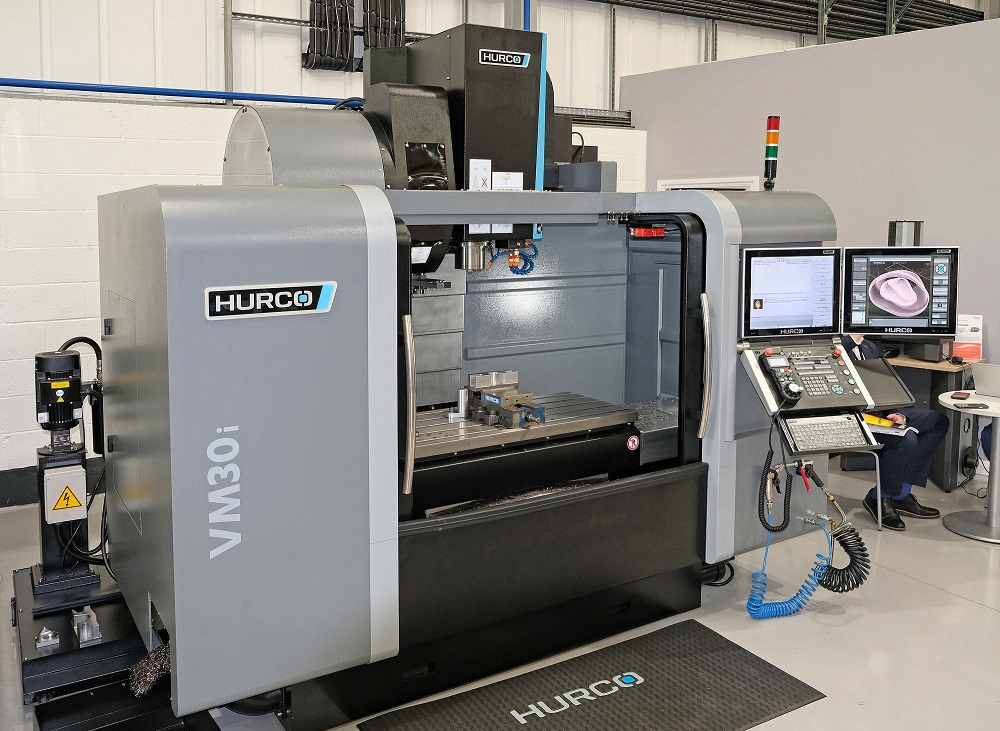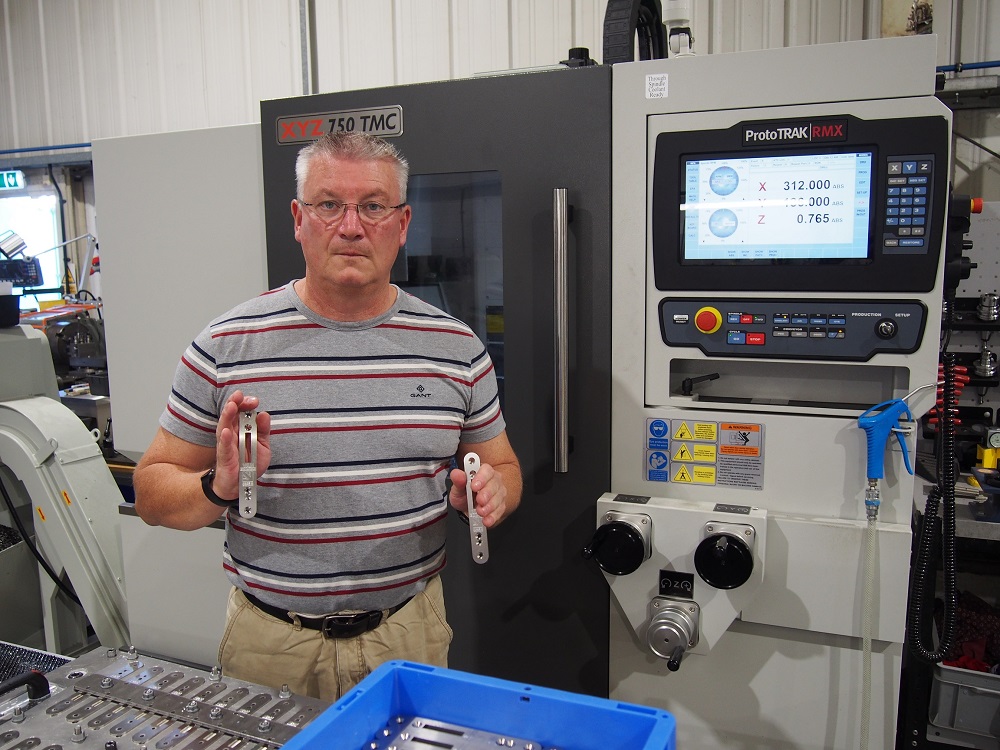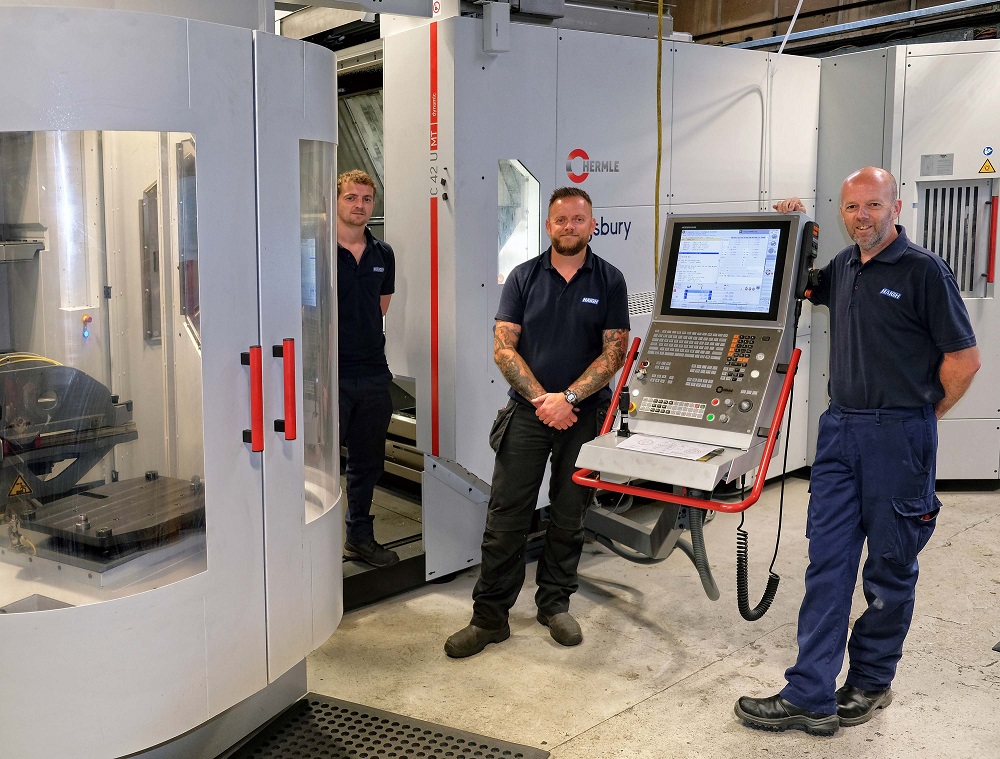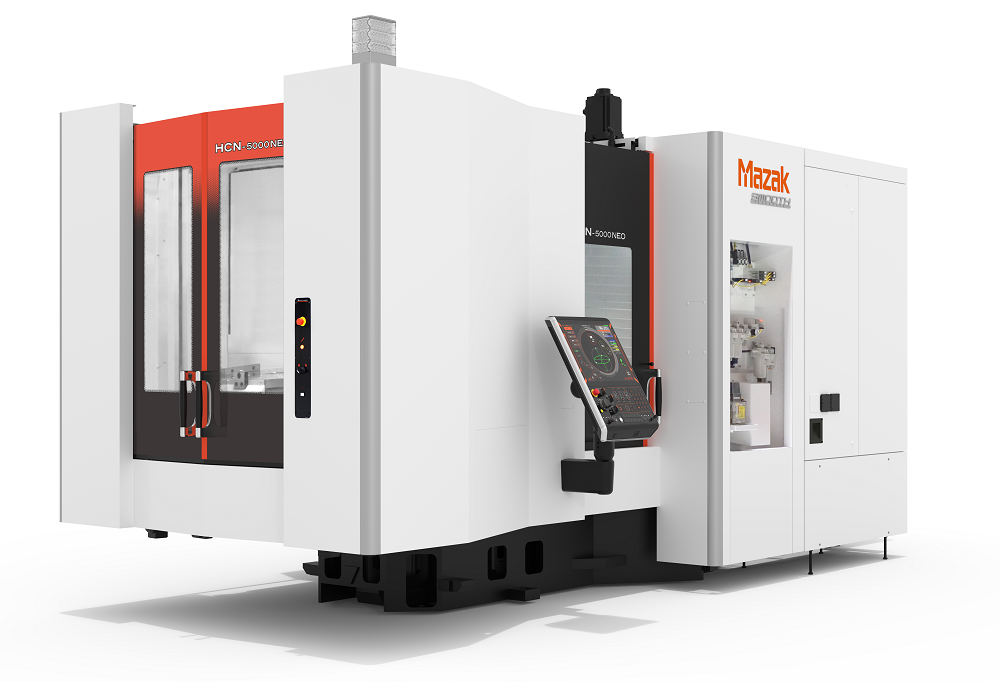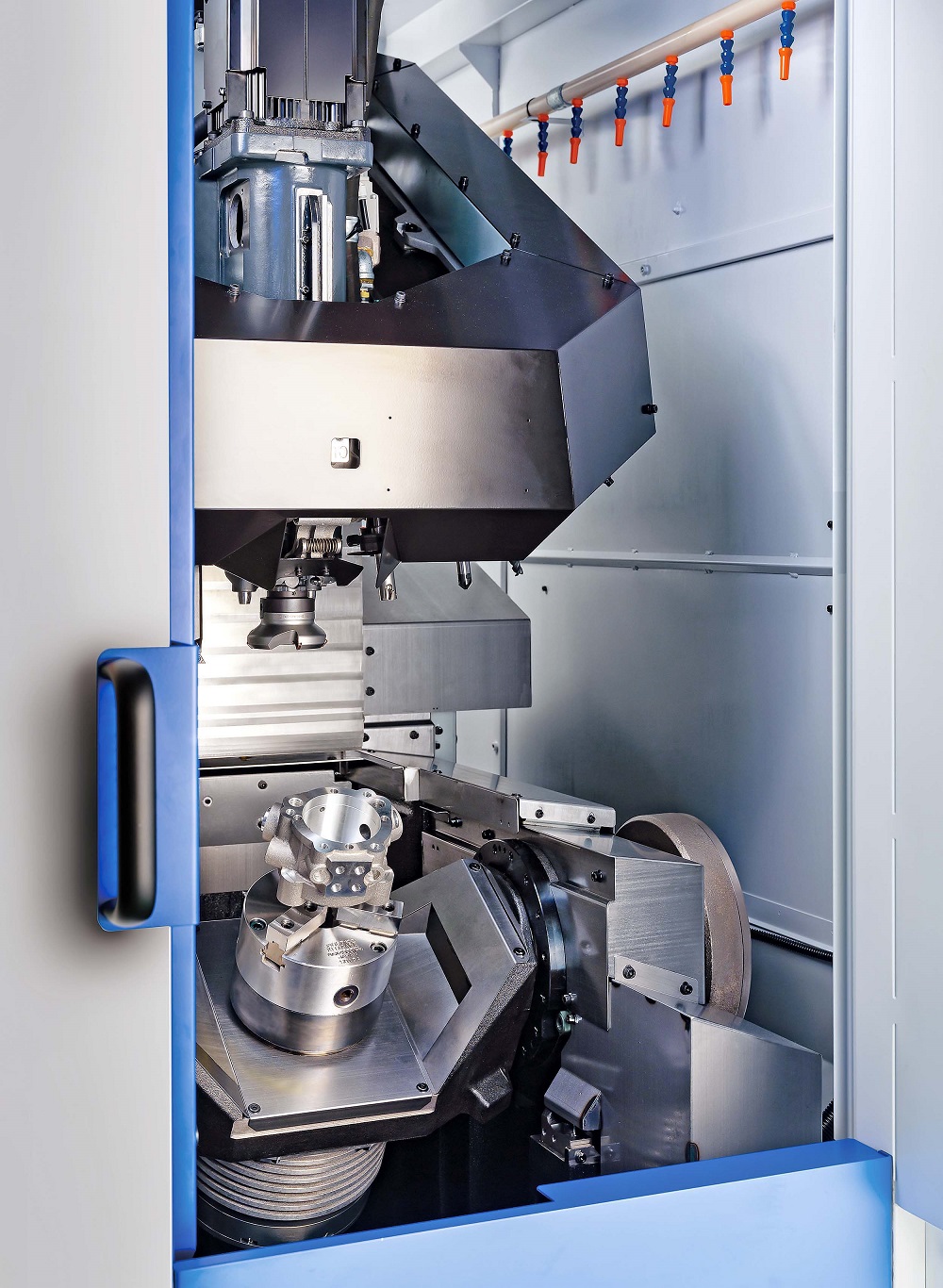One of Hurco’s best-selling three-axis vertical machining centres (VMCs), the VM30i with a 1270 x 508 x 508 mm working envelope in a compact footprint of approximately 4.1 x 2.7 m, is now available as a Plus version. The machine has been upgraded from a singlescreen to a twin-screen WinMax control and offers a 12,000 rpm/15 kW spindle instead of a 10,000 rpm version. Additional new benefits include 20 bar through-spindle coolant, LCD remote jog and an auger for efficient swarf evacuation.
Philip Carr, an applications engineer at Hurco Europe in High Wycombe, gave an insight into the advantages of the upgraded machine. He started by demonstrating the power of the spindle, with a Kyocera SGS seven-flute end mill ripping into mild steel to a depth of 50 mm. He was running a program with tool paths created using UltiPocket, a milling software option within Hurco’s WinMax programming and control software that allows the boundary of a component to be defined and then pockets or islands within it. The approach eliminates complex calculations and shortens part programming time.
Carr pointed out that the addition of a second control screen allows the generation of a graphical component image as cycle programming takes place and the display of a full simulation after it is complete. Operators receive a precise visual representation of the cycle and the ability to slow down the simulation, enhancing understanding and analysis.
“Utilising a Hurco VM30i Plus with our WinMax twin-screen control system, a manufacturer can take advantage of a powerful piece of production equipment that doubles as a VMC and a CADCAM system,” states Carr.
For further information www.hurco.co.uk






